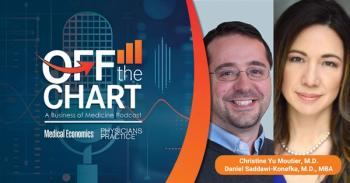
Backstage Support Heroes: Gratitude for those working magic behind the scenes
Rapid credentializations have allowed healthcare professionals to practice across multiple states during the pandemic.
The COVID-19 pandemic hit U.S. healthcare like a bolt of lightning. Hospitals and healthcare organizations had to react very quickly, not an easy thing to do when you’re dealing with a highly contagious novel virus spreading quickly through communities and wreaking havoc on our medical system. Physicians, nurses, and others on the front lines of clinical care were helping thousands of seriously ill patients while lacking basic PPE—and trying to keep themselves from falling ill. No doubt, these clinicians are heroes who answered the call of COVID-19.
Behind the scenes, this pandemic forced healthcare providers to rethink their models of care delivery. Many organizations needed to quickly make the pivot to telemedicine. Additionally, some cities and states were being hit much harder by COVID-19 than others. Physicians and nurses were game to help but had to make sure they were properly credentialed in order to do so. Physicians and nurses can’t legally work if they aren’t licensed in a particular state. In normal times, this process is timely, extensive, and complicated—during a global pandemic, it can seem downright impossible.
The good news? It wasn’t impossible, and here is where (one of the many) unsung heroes of COVID-19 came into play—the provider credentialers who sprang into action and worked tirelessly in the back office or even remotely to support front-line clinical staff so that they could work. If a physician in California needed credentials quickly to provide telemedicine to a patient in Texas, credentialers made it happen. If a nurse licensed in a state where COVID-19 infections were lower wanted to support care teams in hard-hit New York City, credentialers worked to fast-track those credentials.
March to May 2020 was the highest three-month stretch of state license application volume our clients have ever experienced with California and Florida taking the lead.
Recently, we pulled some data on the number of credentials requested and issued during COVID-19, and the surge we have seen was massive, showing the weight of the task that credentialers were asked to perform. Some data points worth highlighting:
- While every client saw big changes, comparing the first quarter 2020 with the second, two of our clients saw an over 500 percent increase in telemedicine credentials, and two more saw increases over 100 percent.
- March to May 2020 was the highest three-month stretch of state license application volume our clients have ever experienced with California and Florida taking the lead; both states were hit hard by COVID-19.
- Among our clients, internal medicine, emergency medicine, and family medicine specialties saw the highest increases in credential applications.
- Comparing state license applications in 2020 versus 2019, we’ve seen a 260 percent increase (369 in 2019 versus 1,328 in 2020 so far).
To those front-line credentialers, we salute you
Physicians and nurses were direly needed during the earliest months of COVID-19. Many were falling ill themselves and unable to work. As of July,
Thank you for taking on the tireless task of credentialing staff across state lines, for working through the complicated intricacies of credentialing for telemedicine, and for working to fast-track the physicians and nurses coming out of retirement.
As we have learned, COVID-19 waits for no one; it’s fast-moving, and unfortunately, it’s not going anywhere anytime soon. Thankfully, we have those in healthcare who are fast-moving too and have the right tools to make miracles happen when needed. To those front-line credentialers, we salute you.
About the Author
Tom Clifford, M.D., F.A.C.S., and CMO of
Newsletter
Optimize your practice with the Physicians Practice newsletter, offering management pearls, leadership tips, and business strategies tailored for practice administrators and physicians of any specialty.











